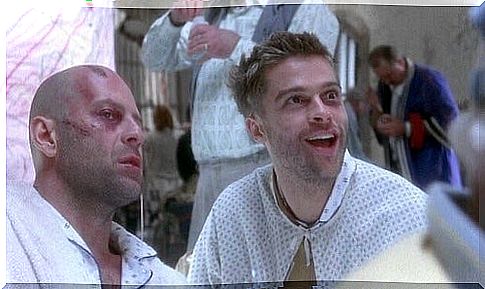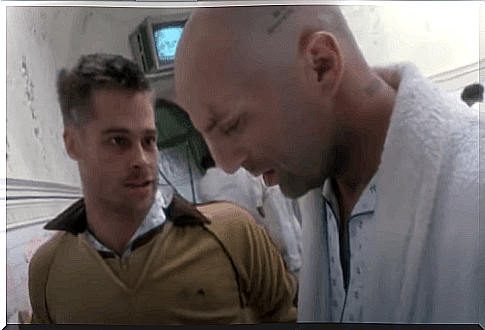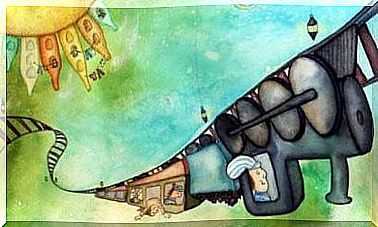The Army Of The 12 Monkeys: Very Current Dystopian Film

Reality surpasses fiction. We never thought that this sentence could make as much sense as it does today; if a few months ago we had been told that we would have experienced such a critical situation at the social health level, we would not have believed it. Still, The 12 Monkey Army had somehow warned us.
The fiction has gone so far beyond that that dystopia no longer surprises us; nor does Charlie Brooker – creator of Black Mirror – want to continue his series. But it always feels strange to watch movies that seemed to predict what has happened in our day.
From the carefree 90s, we present a film that warned about an inhospitable future due to a virus: The Army of the 12 Monkeys (by Gillian, 1995).
The army of the 12 monkeys: dystopian science fiction
We have already said on other occasions that dystopia, understood as a branch of science fiction, seems to warn us about dark and inhospitable future scenarios. Events which, on the other hand, could be the direct consequence of the present if the necessary preventive measures are not taken.
The dystopian genre is extremely prolific from the late 20th century to the present, as many seem to have foreseen the negative consequences of unprecedented technological progress.
Of all the dystopian works, The Army of the 12 Monkeys seems to be the most current. A future where humanity is doomed to live underground due to a virus makes more sense today than ever.
Director Terry Gilliam, who had already achieved success with Monty Python and the Holy Grail , drew inspiration from the French film La Jetée (Marker, 1962) to create his famous dystopian film.
The interpreters
As a lead actor, Bruce Willis plays a man who, born in the late 1980s, sees the world he knew vanish due to a virus. Condemned to live underground with other humans, he participates in a series of missions in an attempt to correct the mistakes of the past. The purpose of these missions is to discover the origin of the virus and collect samples so that scientists can develop a vaccine.
In the role of antagonist we find a very young Brad Pitt who already had the intention of shaking off the role of the “handsome” giving us a great interpretation of madness. The underworld inhabited by James Cole (Bruce Willis) appears to our eyes as dirty, gloomy, inhospitable and disturbing.
The staging is as eccentric as the director of the film. Time travel marks a film that today enjoys renewed importance, given the social and health events of recent months.
Science fiction is not just about robots and space travel, but also about journeys into the past (or present) with a more distressing and dark perspective. The future could turn out to be terrifying if you don’t act in the present.
Rather than relying on special effects, Gilliam opts for a thriller approach, in which the protagonist must reveal all the actions that led to the event and thus find a cure for the virus or at least stop its progress.
The representation of madness
The most fascinating aspect of the film is the vision of the human species through the walls of a psychiatric clinic. Brad Pitt’s character Jeffrey Goines takes on special importance in these scenes. In a way, locking up James Cole, the hero sent from the future, in a psychiatric clinic embarrasses our species somewhat.
Furthermore, the clinic presents itself to our eyes as a complete chaos, a place in which to confine people who deviate from the established norms; they are completely separated from society rather than reintegrated.
The viewer knows that James Cole is sane, but the world of the film does not seem to agree, which is why he relegates him to an inhospitable and chaotic environment, worthy of the apocalypse.
The exclusion of the “madman” refers to Foucault and his History of Madness in the Classical Age , a work in which the author observes how this concept has changed over time and has been condemned to exclusion.

The army of the 12 monkeys: no remedy, no solution
Despite Cole’s time travel and multiple attempts to change the past, the film’s message seems pretty clear: there is no solution, not even trying to change the past, as history repeats itself as in a cycle.
Humanity, in one way or another, has been doomed to suffer the consequences of the virus. The only solution, therefore, is to look for a vaccine or drug that can alleviate the disease.
In this sense, the female role of the film is crucial, especially from a current perspective. The dystopian genre seems to have heavily penalized women, as seen in The Handmaid’s Tale or V for Vendetta . In fact, women are almost always found in positions of greater vulnerability in dystopian stories.
But what happens in The Army of the 12 Monkeys ? The only female character often is that of Dr. Railly, a psychiatrist who will help Cole in his investigation. What is striking – as we said – is the fact that the character takes shape around the figure of a man.
A man who kidnaps her and with whom, in the end, she has a love affair. But it was the 90s and we will not go into the theme since a thematic development of this type was on the agenda at that time.
Leaving aside this aspect, we find ourselves in front of a film that sinks into despair; which leaves a bad taste in our mouth, ending up telling us: “there is no remedy, there is no solution”. Thus, humanity seems to be doomed to disaster, to the inevitability of an invisible enemy who has kept us locked up or, as in the case of the film, underground.








